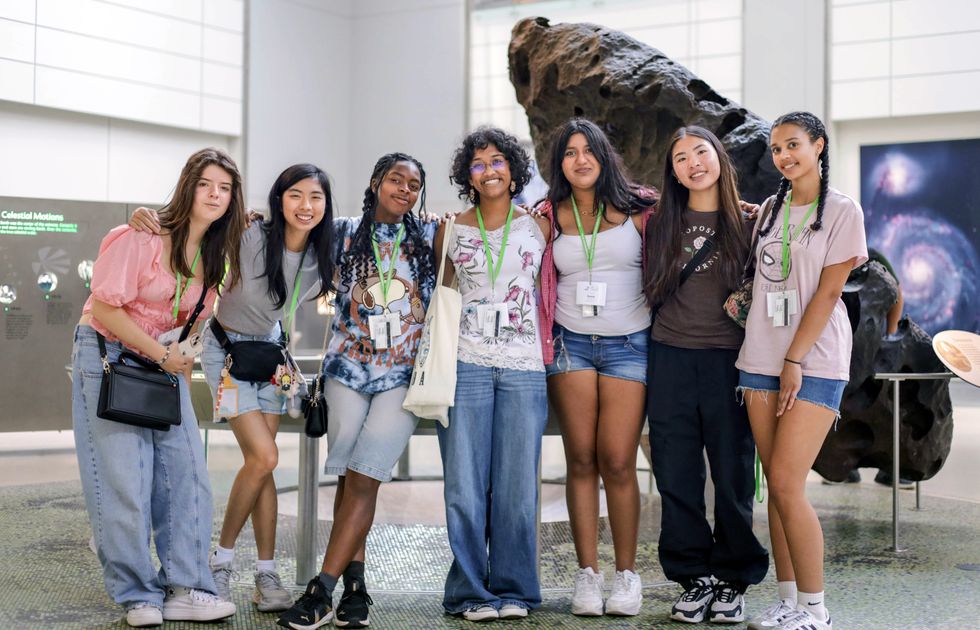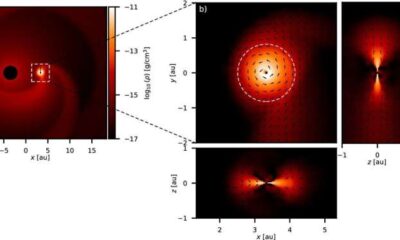Science
Teens Dive into Aerospace and AI at IEEE Summer Camp

The IEEE TryEngineering Summer Institute recently concluded its annual program, attracting a record 311 students aged 13 to 17. The nine-day summer camp, designed to immerse participants in various engineering disciplines, included hands-on activities, expert discussions, and field trips across five prestigious U.S. universities. This year’s locations were the University of Pennsylvania, Rice University, the University of San Diego, Georgia Institute of Technology, and Columbia University.
Launched in 2018, the Summer Institute aims to provide young people with an engaging introduction to engineering principles. According to a participant, the camp “allowed me to gain new experiences and understand the different types of engineering disciplines, and make many great friends and memories that will remain with me.” The program encourages students to explore trending technologies, including artificial intelligence and microcontrollers, while also addressing ethical issues related to engineering and insights into STEM careers.
Exploring Engineering at Leading Universities
Each university offered unique experiences tailored to its strengths. At the University of Pennsylvania, students participated in a variety of hands-on sessions. They visited the Franklin Institute, where IEEE volunteers discussed the technologies on display. A speaker from the Philadelphia International Airport shared insights on engineering solutions that maintain operations at one of the busiest airports in the United States. Students also engaged with engineers from Salesforce, who highlighted the importance of creative problem-solving in various industries.
“TryEngineering is a fantastic place to learn about all facets of engineering,” remarked a participant, who particularly enjoyed the microcontroller lessons, stating, “I was able to combine my computer programming skills with my friend’s electrical skills to create something I wouldn’t have been able to make on my own.”
At Rice University, students tackled engineering challenges, including constructing bridge models from balsa wood. They tested these structures’ strength by incrementally adding weight until they failed. The glider challenge focused on building and testing aircraft designs. A student noted, “I enjoyed the challenges because they were interesting and competitive, helping us develop more critical thinking and teamwork skills.”
Students also visited NASA’s Johnson Space Center, where they met former astronauts who provided insights into rocket engineering and shared career advice.
Innovative Learning in Diverse Environments
Participants at the University of San Diego engaged in team-based projects, including designing solutions to a challenge involving the safe removal of harmful kernels from popcorn. They toured Qualcomm’s headquarters, gaining further exposure to real-world engineering applications. One participant described the program as “an invaluable resource, especially for students who don’t have access to engineering classes or a robotics team at their school.”
Columbia University’s camp, organized in partnership with the National Student Leadership Conference, combined leadership training with engineering activities. Students visited Joint Base McGuire-Dix Lakehurst, where members of the U.S. Air Force introduced them to rescue mission technologies. The participants also explored helicopters and flew drones, further enhancing their practical engineering knowledge.
At the Georgia Institute of Technology, 20 local high school students attended the program at no cost, thanks to the support of various organizations, including the Georgia Space Grant Consortium. Students designed, built, and tested robotic boats intended for humanitarian aid delivery. Georgia Tech students and faculty members mentored participants throughout the challenge. They also visited Accenture’s offices and met with industry professionals, including engineers from Siemens, who discussed potential STEM career paths.
Throughout the camp, students participated in a collaborative activity called “sparking solutions.” Each team identified an engineering problem and developed a design and prototype to address it. The projects varied, including proposals to improve mobility for the elderly and enhance water quality in local parks. Teams presented their solutions to volunteer judges from the IEEE Educational Activities preuniversity education coordinating committee, which evaluated the projects based on demand, passion, design, and presentation effectiveness. The top team received a prize for their innovative solution.
A significant aspect of the Summer Institute is its commitment to accessibility through scholarships. The Educational Activities Scholarship Fund of the IEEE Foundation supported 45 students this year, allowing them to participate in the program. Various IEEE societies and councils contributed funds, strengthening IEEE’s role in nurturing future innovators and leaders.
One scholarship recipient expressed gratitude, stating, “Before I attended the summer camp, I was not sure if I was cut out to be an engineer. But after my wonderful experience at the IEEE TryEngineering Summer Institute, I am sure that this will be the right career path for me.” Another participant noted that exposure to various engineering disciplines helped them become better informed about potential career choices.
The positive impact of the IEEE TryEngineering Summer Institute is clear, as it continues to inspire the next generation of engineers, fostering both skill development and a passion for innovation.
-

 Science2 months ago
Science2 months agoOhio State Study Uncovers Brain Connectivity and Function Links
-

 Politics2 months ago
Politics2 months agoHamas Chief Stresses Disarmament Tied to Occupation’s End
-

 Science1 month ago
Science1 month agoUniversity of Hawaiʻi Joins $25.6M AI Project for Disaster Monitoring
-

 Science4 weeks ago
Science4 weeks agoALMA Discovers Companion Orbiting Giant Star π 1 Gruis
-

 Entertainment2 months ago
Entertainment2 months agoMegan Thee Stallion Exposes Alleged Online Attack by Bots
-

 Science2 months ago
Science2 months agoResearchers Challenge 200-Year-Old Physics Principle with Atomic Engines
-

 Entertainment2 months ago
Entertainment2 months agoPaloma Elsesser Shines at LA Event with Iconic Slicked-Back Bun
-

 World1 month ago
World1 month agoFDA Unveils Plan to Cut Drug Prices and Boost Biosimilars
-

 Business2 months ago
Business2 months agoMotley Fool Wealth Management Reduces Medtronic Holdings by 14.7%
-

 Science2 months ago
Science2 months agoInnovator Captures Light at 2 Billion Frames Per Second
-

 Top Stories2 months ago
Top Stories2 months agoFederal Agents Detain Driver in Addison; Protests Erupt Immediately
-

 Entertainment1 month ago
Entertainment1 month agoBeloved Artist and Community Leader Gloria Rosencrants Passes Away









